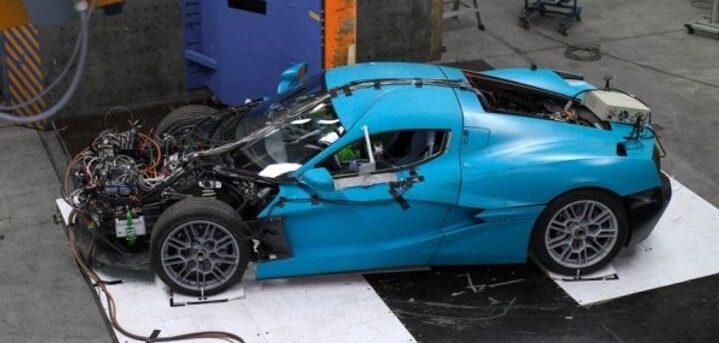Rimac says that the crash test program for the global homologation of its Nevera EV is finally complete, after four years, thousands of digital simulations and nine complete vehicles destroyed. In total, the Nevera prototypes were subject to 45 separate physical crash tests, and many more static passive safety tests.
The final test, which took place at the end of January, was the demanding side pole test, conducted at 32km/h and simulating a side impact with a lamppost. With very little of the car’s body and chassis between the pole and the occupants, and very little energy absorbed by the pole, it’s one of the most difficult tests a car can be subjected to.
According to Rimac, the structure of the Nevera proved to be so effective at distributing the crash energy that the door on the impact side could still be opened after the test. This test was the last passive safety US-homologation test, while European homologation tests were completed in 2021. Rimac says the last crash test resulted in the occupant test dummy’s load results being all green, well within requirements.
Built around a carbon-fiber monocoque extending between the front and rear suspension attachments, the Nevera is said to be the stiffest production car ever created, with a torsional rigidity of 70,000Nm/degree. The monocoque also forms part of a very stiff survival cell that helps to dissipate energy around the occupants in the case of a crash.
Mate Rimac, Rimac group founder and CEO, said, “The Nevera was designed to excel in every area, with each component scrutinized and carefully engineered to deliver the best possible performance. For four years now we have been applying that same painstaking attention to detail to the safety of Nevera, with engineers working tirelessly on thousands of digital simulations and modifications to prototype vehicles, just to see their work destroyed during the crash testing process.
“All of their efforts have been absolutely crucial to the development of Nevera, and as this latest test concludes the Nevera crash-testing program, which brings us close to finally being able to hand over our next-generation all-electric hypercar to its first owners throughout the world.”


